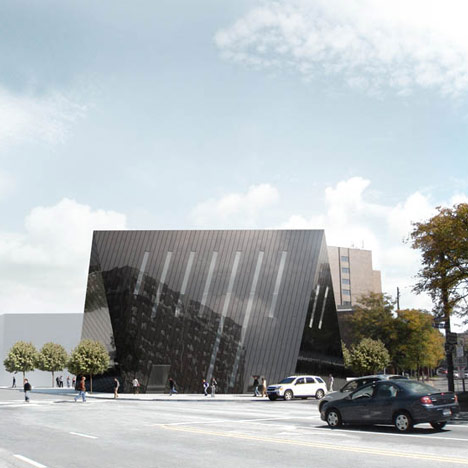
Museum of Contemporary Art Cleveland by Foreign Office Architects
The Museum of Contemporary Art Cleveland in Ohio, USA, have unveiled plans for a new museum building by London firm Foreign Office Architects.
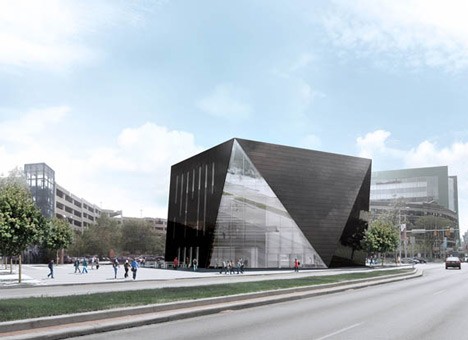
The four-storey building will have a hexagonal base rising through faceted sides to a square roof.
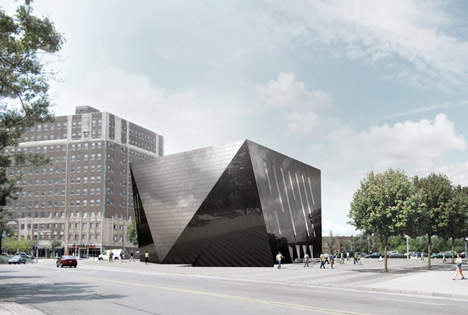
It will be clad in black mirror-finish stainless steel, with tinted glazing to appear as one unified volume during the day.
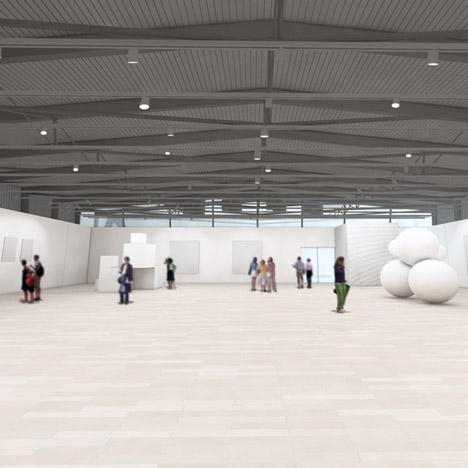
A lobby and meeting place on the ground floor will include a shop, cafe and events space, while part of the triangular site will be used as a public plaza and for seasonal events.
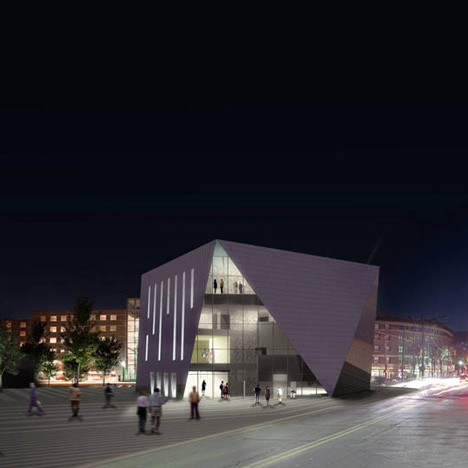
Foreign Office Architects collaborated with Cleveland studio Westlake Reed Leskosky for the project.
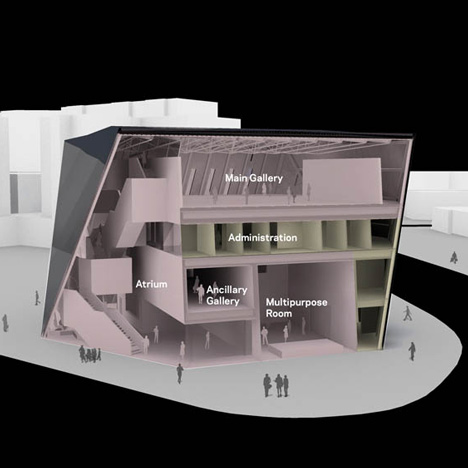
More about Foreign Office Architects on Dezeen:
New Street Gateway for Birmingham, UK (November 2008)
Meydan Shopping Square in Istanbul (December 2007)
Here's some more information from the museum:
Located at the intersection of Euclid Avenue and Mayfield Road, the new MOCA is a flagship project of Cleveland’s emerging Uptown district, a major urban-revitalization project undertaken by Case Western Reserve University; developer MRN, Ltd.; and other institutions in the University Circle neighborhood.
The Museum will serve as a catalyst for creativity and growth in the area—which is home to one of the country’s largest concentrations of cultural, educational, and medical institutions—with greatly expanded educational and public programs, as well as imaginative collaborations with neighboring organizations and cultural partners.
Designed by the internationally acclaimed firm Foreign Office Architects (FOA), London. The nearly 34,000-square-foot, four-story structure is FOA’s first major building in the United States, and its first museum.
FOA has responded ingeniously to the project’s roughly triangular site by designing a building with a hexagonal base that, with imperceptible changes in the shape of each story, rises to a square roof. Viewed from the exterior, the building will appear as an inventive massing of six geometric facets, some flat, others sloping at various angles, all coming together to create a powerful abstract form.
Clad primarily in mirror-finish black Rimex stainless steel, the façade of the new MOCA will reflect its urban surroundings, changing in appearance with differences in light and weather. Window glazing will be tinted to assimilate with the reflective skin so that during the day the building will read as a unified volume, while at night interior lights will create a dynamic pattern on the dark surface.
Three of the building’s six facets, one of them clad in transparent glass, will flank a public plaza. This will provide a public gathering place and also serve as MOCA’s “front yard,” and will be the site of seasonal programming. From here, visitors and passersby may look through the transparent facet, site of the Museum entrance, into the ground floor, a space intended for socializing and for civic and cultural events.
While the building’s dark exterior will offer almost no hint of the interior massing and structure, the experience inside will be notably transparent. Upon entering MOCA, visitors will find themselves in an atrium from which they may visually grasp the dynamic shape and structure of the building as it rises. This space will lead in turn to the Museum’s lobby, café, and shop, and to a double-height multi-purpose room that will house public programs and other events. From here, visitors may take the Museum’s staircase—itself a monumental sculptural object—or an elevator to the upper floors.
While the main exhibition gallery is on the top floor, all four floors of the Museum contain space for either exhibitions or public programs, with the second and third floors combining public and “back of house” functions. The second floor, for example, will house both exhibition workshops and a 1,500-square-foot public gallery, to be used for more intimately scaled exhibitions; consonant with the openness that is characteristic of the building’s interior, visitors approaching this gallery will also be able to glimpse the workshops. The third floor, home to MOCA’s administrative offices, will also include spaces for classes, lectures, and other educational programs.
Positioned within University Circle’s academic life, art school activity, and cultural offerings, MOCA will realize its dynamic potential. It will infuse this new district with energy and life, day and night. The building is designed to showcase a program of internationally emerging art in flexible gallery spaces. The lobby is designed as an urban living room, a place for visitors to mingle, eat, shop, attend events, over the course of hours, or for brief interludes in a busy day.
There will be no admission charge to the first floor space. It is a place to engage at no cost before proceeding on to view our exhibitions for a modest fee. Evenings will be frequently animated by cultural events staged in a multi-purpose room designed for maximum flexibility. The building itself is a learning environment, infused at each level with education offerings that range from low tech to high tech, from contemplative to interactive, from solitary to group encounters. This building is an opportunity to provide a 21st century model of an art museum that anticipates dramatic shifts in how we learn, how we see, and how we socialize.
The new Museum of Contemporary Art Cleveland will be forty-four percent larger than the Museum’s current, leased facility, and will demonstrate that a museum expansion need not be large in scale to be ambitious in all respects. Devised for both environmental and fiscal sustainability, the design for the four-story building is at once technically inventive, visually stunning, and highly practical.
In addition to Foreign Office Architects, the design team for the new Museum includes executive architects Westlake Reed Leskosky, headquartered in Cleveland and designers of more than fifty cultural buildings throughout the United States.
DezeenTV: Museum of Contemporary Art Cleveland by FOA
.
Can't see the movie? Click here.
See also:
.
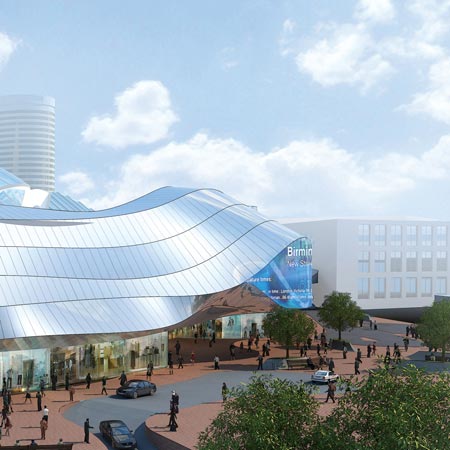 |
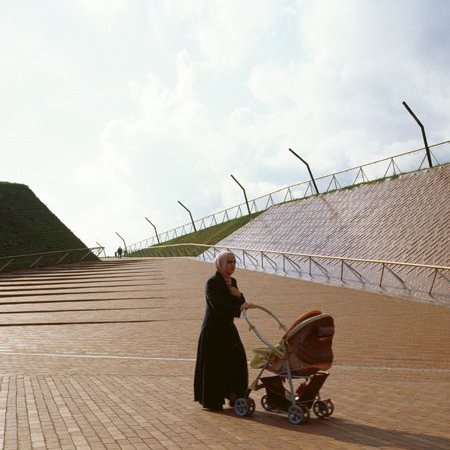 |
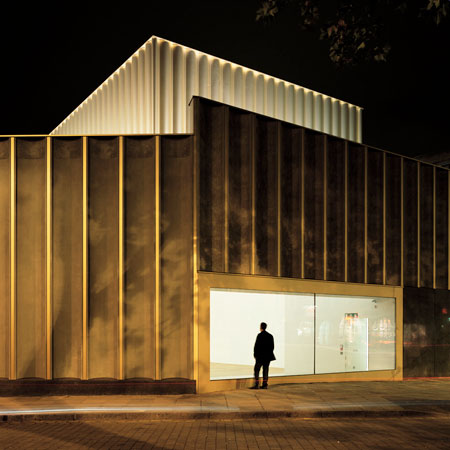 |
| New Street Gateway by Foreign Office Architects |
Shopping square by Foreign Office Architects |
Nottingham Contemporary by Caruso St John |